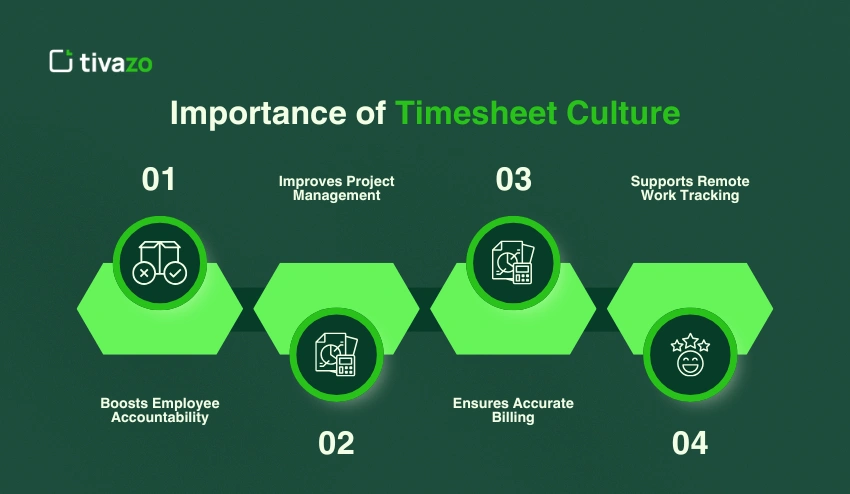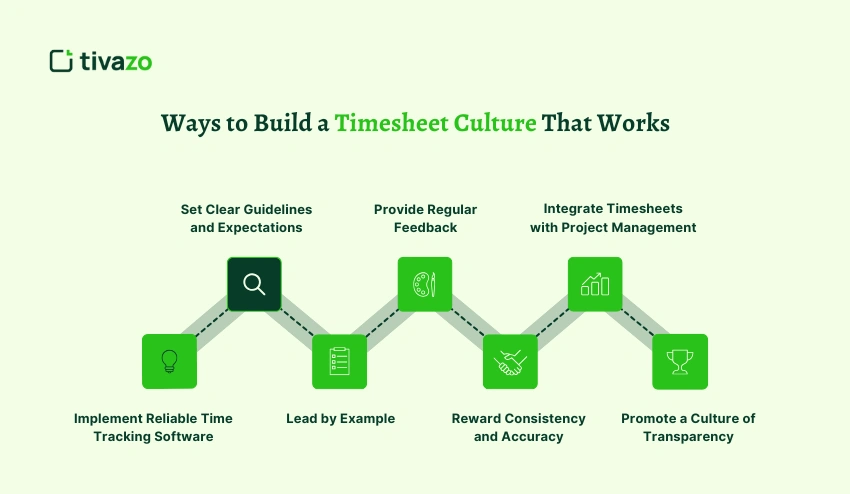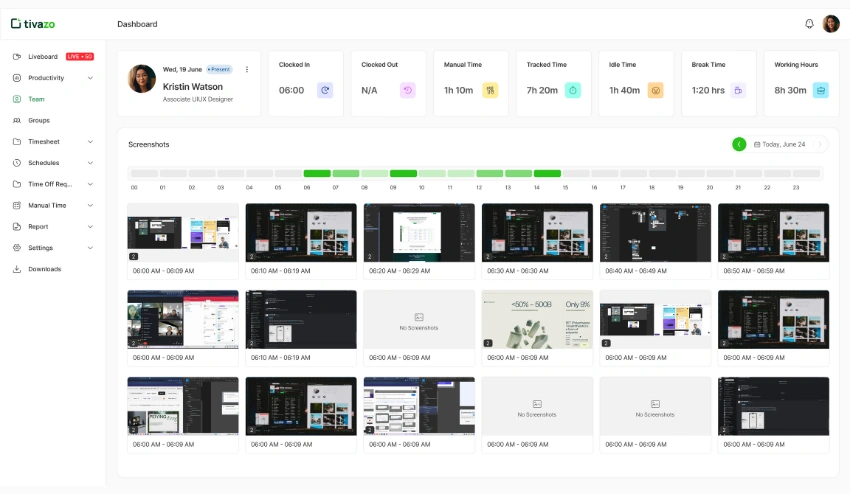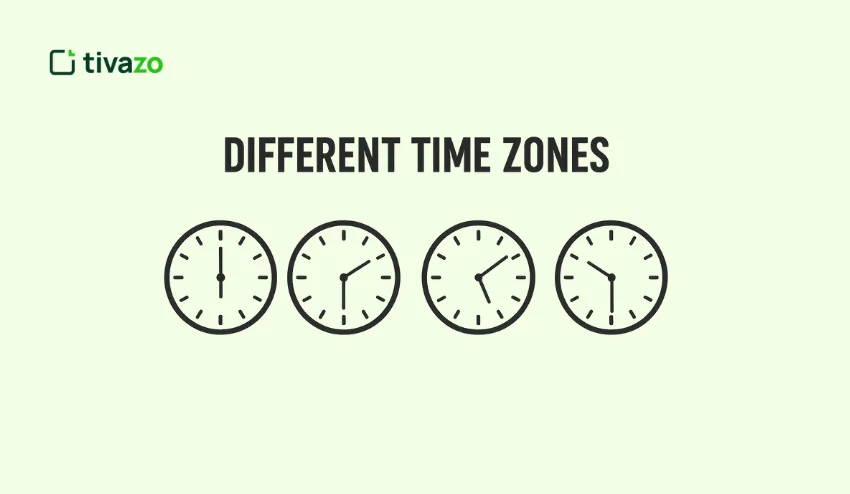Time is money in the modern fast-paced workplaces; time is accountability, productivity, and efficiency. However, a lot of teams find it difficult to measure work hours on a regular basis.
It is there that the establishment of a mighty timesheet culture can help. It is not only about completing digital time sheets but also about establishing transparency, better time allocation in projects, and making employees responsible. A culture of healthy timesheets assists organizations in gauging productivity, maximizing the use of resources, and ensuring that billable hours are well monitored.
Companies can eliminate the fear of timesheets and use them as an instrument of growth by adopting intelligent timekeeping habits. Since the introduction of trusted time management software is one of the steps to implement and enhance the level of compliance and efficiency, one of the aims is to integrate time management tactics into daily work processes. In this blog, we shall discuss intelligent, practical applications of how to develop a timesheet culture that works, the kind of culture that energizes workers, improves organizational performance, and creates enduring trust between individuals in teams.
What is Timesheet culture?
Timesheet culture is the work culture of having systematic employee hours on the job monitored, documented, and evaluated in order to create transparency, responsibility, and effectiveness. Businesses are moving towards digital timesheets and time tracking software in their operations, especially in other areas such as the United States, the UK, and Dubai, to enhance productivity and proper billing of the clients.
A great timesheet culture is not just about completing forms but about developing a culture in employees that cherishes proper reporting, and managers utilize efficiency metrics to make better use of the resources, and organizations enhance overall performance. In the remote team or in the local office, timesheet culture can assist companies to organize the time allocated to projects more efficiently, billable hours, and adherence to labor laws.
To summarize, a culture of healthy timesheets must be promoted to enhance the efficiency of organizations as well as the level of trust and responsibility throughout workplaces.
Importance of timesheet culture
A good culture of timesheet is not merely a workplace principle; it is the basis of productivity, responsibility, and efficiency within an organization. The promotion of a regular practice of time tracking will help the companies to simplify the work processes and better distribute time among the projects and establish the increased transparent boundaries within the groups.

The following are the main reasons why the timesheet culture is a necessity for businesses nowadays.
1. Boosts Employee Accountability
Employees should embrace a timesheet culture, and thus, they are more conscious of the way they spend their working hours. Documenting billable hours, tracking activities using electronic timesheets assists the staff to remain on track, prevent distractions, and prioritize management. Not only does this accountability enhance the performance of an individual, but it also fosters trust in teams.
To the managers, regular time tracking would help in a clear understanding of the performance of employees. It enables them to see bottlenecks, enhance the use of resources, and ensure transparency of work hours to project objectives. In the long run, accountability creates a sense of ownership that leads to overall productivity at the workplace.
2. Improves Project Management
One of the largest advantages of a robust timesheet culture is that it causes effective project time allocation. By monitoring work hours and the completion of work, project managers could make more judicious decisions regarding deadlines, personnel, and the allocation of work. This will avoid burnout, decrease project delays, and ensure efficient utilization of company resources.
Efficiency indicators are also important outputs provided by time tracking software that can point out the projects that are taking the most time. Through this information, companies will be able to make future preparations, predict their schedules, and become as efficient as possible as an organization. An implemented timesheet culture will consequently guarantee smoother and predictable project results.
3. Ensures Accurate Billing
Correct billing is paramount to businesses that work with clients, and that is where timesheet culture brings true value to them. Through the process of recording billable hours in a constant manner, the company would be in a position to make transparent invoices that would enhance trust in the company among clients. Online timesheets minimize mistakes, decrease conflicts, and help to keep to the industry standards.
Additionally, accurate time tracking is beneficial in financial forecasting and the management of revenues. Organizations are able to analyze the profitability of projects, non-billable hours, and make informed decisions to increase growth with detailed records. Proper billing fuelled by an effective time sheet culture is a competitive edge in the business-to-customer environment.
4. Supports Remote Work Tracking
Timesheet culture is critical in the hybrid and remote workplace that takes place in the present day, as it helps keep the distributed team effective and responsible. Whichever the location, remote workers can use time tracking software to record hours, update on progress, and keep work hours transparent. This creates trust among the employees and the managers and creates a feeling of responsibility.
In the case of organizations, time tracking with the help of timesheets will help employees to track their productivity and ensure that working standards do not violate labor laws. It also assists the leaders in detecting the gaps in efficiency and enhancing the cooperation between the time zones. The culture of strong timesheets is, thus, a necessity in maintaining high-performing remote and hybrid workplaces.
The significance of a well-developed timesheet culture is difficult to overestimate. It gives the framework that businesses require to succeed in the competitive market, whether it is enhancing accountability or aiding the monitoring of remote work.
7 Ways to Build a Timesheet Culture That Works
The establishment of a good timesheet culture is critical to boosting productivity, accountability, and efficiency of the organization. Smart time tracking practices will help companies to make timesheets an instrument of enhanced project management, tracking of employee performance, and transparency.

The following are seven practical measures that can be taken to develop a culture of timesheets that can be employed in any workplace.
1. Implement Reliable Time Tracking Software
The first step towards a successful timesheet culture is investing in time tracking software. Remote working, hours tracking, and billable task logging are simple in the digital world and allow employees to be more accountable.
These systems also give the efficiency metrics that enable managers to examine the trend of productivity and consumption of resources. With the help of automatic reports, organizations are able to properly bill and follow labor requirements.
Timesheets can move beyond the tedious aspect with the appropriate software and emerge as a productive habit, strengthening employee accountability and enhancing transparency at the workplace in general.
2. Set Clear Guidelines and Expectations
Creating a good timesheet culture requires well-defined policies about the submission and utilization of timesheets. The employees are supposed to know how to record the hours, report non-billable hours, and ensure transparency in the work hours.
Guidelines must provide due dates and allowable formats, and the way the managers will utilize the information in gauging productivity and allotment of time in projects. Clarity helps avoid misunderstandings and eliminates mistakes in monitoring, which makes different teams consistent in their work.
Employees will have better time management mechanisms that will make them more responsible when they are aware of what is expected, and will bring about a culture of proper record-keeping.
3. Lead by Example
Leadership is also critical in strengthening a timesheet culture. The managers and executives who regularly monitor their hours and adhere to reporting behaviors would serve as an example to the rest of the team.
It is possible to show interest in managing timesheets to ensure that employees can use the same practice and be more accountable and transparent. The role of leadership is also indicative that time tracking is important and part of efficiency in an organization.
This top-down solution guarantees that time tracking is not the mandate but a component of the business process, which would keep the groups on track and productive.
4. Provide Regular Feedback
Frequent feedback would be necessary to reinforce the timesheet culture. To assist employees in maximizing performance at work, it is recommended that managers analyze the efficiency metrics, review the logged hours, and discuss performance with employees.
Feedback supports the importance of tracking time correctly by focusing on remediable aspects and identifying continuous accountability. It also helps motivate workers to embrace superior methods of allocating time on projects and observe the reporting requirements.
Feedback transforms timesheets from a record-keeping instrument to an active, productivity-enhancing platform, which motivates employee involvement and performance monitoring.
5. Reward Consistency and Accuracy
Motivating proper submission of timesheets is a way to achieve a viable timesheet culture. Rewarding those employees who have been recording their hours in a reliable manner and in a transparent way will encourage all other employees to use the best practices.
The rewards may be performance bonuses, recognition in the form of publicity, or development opportunities. This recognition strengthens the sense of accountability and confirmation that proper time management is one of the keys to efficiency in the organization.
In the long run, consistent rewarding and accuracy will ensure that timesheet practices become an established part of the work routine, where time tracking becomes another welcome and appreciated work culture aspect.
6. Integrate Timesheets with Project Management
The productivity measurement is enhanced by incorporating time tracking in the project management systems. The employees will be able to associate tasks with definite projects, and project time allocation and use of the resources will be more accurate.
Such integration assists managers in keeping track of progress in real-time, in addition to the ability to adjust workloads and to make sure that the billable hours are properly documented. The integration of timesheets and project management increases the effectiveness and transparency of timesheets, which constitute essential elements of a well-developed timesheet culture.
It also enables the teams to recognize bottlenecks, enhance cooperation, and accomplish project objectives without affecting the responsibility of the employees.
7. Promote a Culture of Transparency
Lastly, a well-developed timesheet culture requires promoting open communication. The employees must be encouraged to discuss workload issues, non-billable duties, and reporting problems without the fear of being judged.
Openness fosters trust between the staff and the managers and, therefore, time tracking is perceived as a productivity tool and not one of micromanagement. Better resource planning, efficiency measures, and employee performance monitoring are beneficial to organizations with openness included in the workflow.
Through transparency, the companies integrate the practice of timesheets in the daily workflow, resulting in a sustainable culture of responsibility and efficiency.
To establish a powerful culture of timekeeping, a set of intelligent tools, the definition of expectations and objectives, the participation of the leadership, and feedback will have to be combined. These seven strategies can help organizations to improve accountability, better project management, and create a productive work environment where the time tracking process can really be valuable.
How Tivazo Enhances Timesheet Culture
Tivazo is a time tracking and employee monitoring system that will simplify work hours management and increase efficiency. Tivazo assists organizations in creating a powerful timesheet culture through the provision of dynamic feedback on work hours and project progress, which promotes accountability and transparency.
Tivazo will help managers track the activity of employees without micromanagement, with such features as live screenshots, idle time notifications, and comprehensive reporting. This is not only a way of keeping time, but it will also enhance trust in a team, as such a way of communication will facilitate the openness of communication and respect.
In addition, the ease of use and interoperability between Tivazo and other platforms allow the product to be used by businesses of any size. Whether an offshore workforce or an on-site workforce, Tivazo offers the resources to develop a work culture of productive, transparent timesheets.

To sum it up, implementing Tivazo into the time tracking strategy of your organization may help to improve your timesheet culture to a great extent. Through its functionality, companies are able to record the proper billing in a company, enhance project management, as well as create a culture of responsibility and trust.
Finally, Tivazo is a useful resource in the establishment of a sustainable and efficient culture of timesheets, which fits organizational objectives and encourages overall efficiency.
Conclusion
In the current competitive job market, the timesheet culture should be nurtured to improve productivity, accountability, and efficiency in an organization. With the help of savvy measures, including time tracking software should be employed, expectations should be clarified, frequent feedback should be given, and transparency should be encouraged- businesses can turn timesheets into both an obstacle to growth and a growth-motivating instrument. Tools such as Tivazo also support a strong timesheet culture because they allow tracking time accurately, assigning time to projects better, and creating trust among the teams.
Finally, a properly developed culture of timesheets can not only guarantee accurate billing and resource optimization but also create an environment in which employees are empowered and the management takes data-driven decisions as well, and the efficiency of the organization is flourishing.




